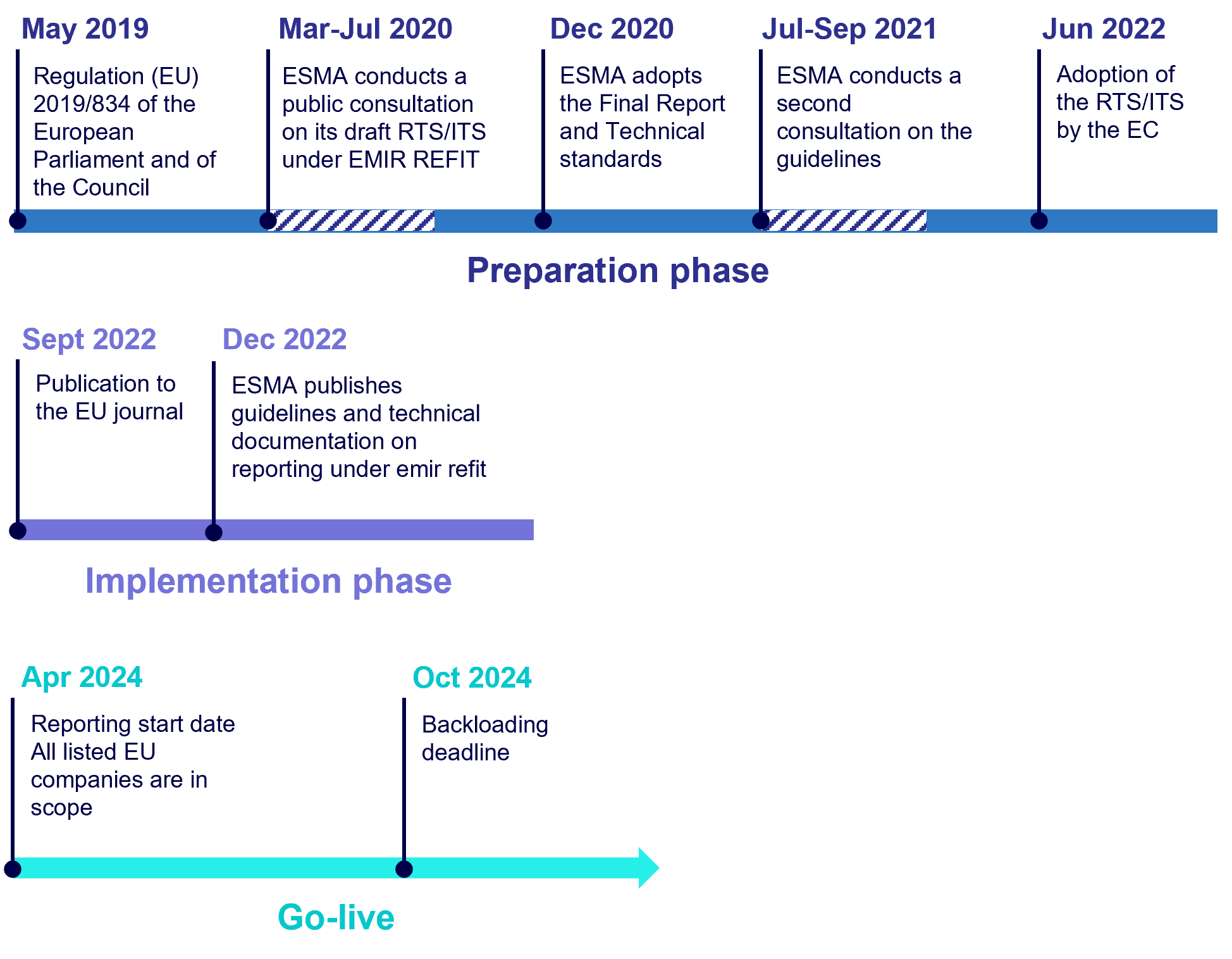The purpose of EMIR Refit and the new rules it introduces
The challenges that EMIR Refit seeks to address relate to two areas in particular: data quality and reporting harmonization.
On the data quality side, some fields are often completed inaccurately; sometimes through a lack of due diligence, and sometimes because it is not clear how the data should be sourced. According to the UK’s Financial Conduct Authority (FCA), some of the most frequently-misreported fields include National Identifiers, Systemic Internalisers (SIs) and Termination Date.
On the harmonization side, the challenge for ESMA is that different organizations have used different data schemas to produce EMIR reports, resulting in inconsistent reporting of the same transaction by the different counterparties involved. In 2021, for example, ESMA reported it was unable to pair 47% of reported trades.
These issues have resulted in six key updates to the EMIR regulations:
1. The introduction of a standardized XML data model conforming to ISO 20022.
2. Updates to 60 existing fields and the introduction of 74 new fields, bringing the total number of fields to a not-inconsiderable 203.
3. A new Unique Product Identifier (UPI), on top of existing ISIN and CFI codes, to add further clarity around the products underlying individual OTC derivatives.
4. New rules around the generation of the Unique Transaction Identifier (UTI), to address issues in the regulation relating to cleared trades in particular.
5. A new requirement to have a documented process for resolving transaction breaks with the relevant counterparties.
6. A new requirement to notify the regulator in the event of an inability to file a report.
Achieving EMIR Refit compliance will require a wide range of activities
These requirements are easy to list, but look under the hood and the amount of work required starts to become apparent. It’s not just a case of updating databases and reporting schemas: some rules require new business processes to be developed, both within the organization and in dealings with external counterparties. In some cases, organizations may need to re-assess the quality of their source data, and some may even want to consider a new reporting platform.
Take the XML schema for ISO20022 compliance, for example. Institutions using off-the-shelf reporting software should find that their vendor has an update the meets this new requirement, while organizations using a custom-built reporting platform will have to develop XML reports in the required format manually. But given the variety and complexity of OTC products, both types of platform will still require a significant amount of functional mapping redesign and testing.
New approaches to data management and data sourcing
In terms of updating existing fields and implementing the 74 new ones, a major piece of work will lie not only in identifying, validating, and integrating the relevant data sources, but also in the design, development and testing of the solution and in ensuring data quality. For example the new Event Type field asks for additional detail about the event triggering the report, which at the very least will require modifications to data tables and the eligibility rules of the report.
There will also be changes in data sourcing. Some sources will reside outside the organization, requiring alignment and integration with external parties. New UTI generation rules may require changes to the way UTI is sourced from brokers, counterparties or Trade Repositories, for example, while the introduction of the UPI will require a call to ANNA DSB, the organisation mandated to issue UPI for OTC instruments. Controls will also need to be implemented or extended to ensure the new data is sourced and handled appropriately.
Business analysis, process redesign and change management
While much of the work will revolve around data sourcing and data management, implementing the new rules will also require expertise in other areas.
For example, business analysis and business process redesign expertise will be needed in order to identify—or set up, if they are not already in place—the correct data sources. For processes that involve relationships between counterparties, such as the requirement to investigate and resolve transaction breaks and report on the outcome, external liaison will be needed to ensure that all parties are briefed and aware of the procedure to be followed.
Change management will be a critical aspect here: to identify impacted teams and processes, co-design process changes, ensure appropriate training, monitor change adoption and even enhance the control framework to reduce the operational risk on the most critical data.
Accelerate work now to be ready for the April 2024 deadline
Taken together, the work involved in EMIR Refit compliance can be considerable. With only a year to implement and test the changes, it’s prudent to start now if work hasn’t started already. In particular, the need to report in XML ISO 20022 may require an RFP to external software vendors, which can take time given the high IT security standards in the banking industry.
A good first step is to run a scoping exercise and gap analysis to determine the size and complexity of the project. Depending on the outcome, a key decision will be whether to undertake the project internally or to work with a strategic partner who can offer the range of competencies needed for a successful, on-time delivery. The sooner the organization has a view of that, the smoother the compliance project will be.
On the same subejct, you can also read our article "How banks can take control of trade expense".














